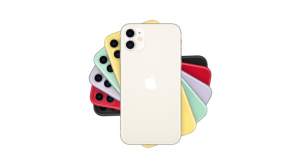Going direct to consumer works well for complex product categories

Ashwin Ramasamy
Contributor
Ashwin Ramasamy is the cofounder of PipeCandy, which provides algorithm-generated insights and predictions about ecommerce and D2C companies. His company helps investors, banks, tech firms and governments understand the global ecommerce landscape. @Ashwinizer
More posts by this contributor
As the holiday season approaches, I can feel the tension in the air: how do I make my gifts stand out?
Thankfully, there are so many fun direct to consumer (D2C) categories — from bath salts to plants, to even organic fertilizer.
A New York City-based VC firm once asked us, “there are so many products that are getting launched in the direct to consumer route. It’s good that you track them. But can you tell us which segment is likely to go direct to consumer?” In other words, they were asking us to be psychic.
We aren’t, but I never let that question go.
There are many reasons why a brand can go D2C. You could unbundle every category on Amazon and there could be a case made for going direct to consumer. Several brands that do just that, but Amazon is not the obvious place to look for all answers.
Let’s take the example of plants and fertilizer. I want to gift a plant this holiday season, but I have two problems: I don’t know which plant to pick for my friend because I don’t know his preferences, and even if I find the right plant, I don’t know whether he’ll be able to keep it alive.
Generally, when people consider purchasing a plant, it’s not because they woke up after having a startling dream about a fern or a ficus that won its heart — it’s more likely that they looked at an empty balcony while sipping their morning coffee and thought it needed a touch of green. People aren’t buying plants; they’re buying better visuals, and a potted palm tree is a vehicle to their preferred emotional state.
But what if he’s unable to take care of the plants? Should I just buy some really good candles instead? Rooted, an online plant store, sorts its offerings using criteria like the amount of light required and how frequently a plant needs to be watered. As a result, I found Tim, a snake plant that’s “virtually indestructible and adaptable to almost any conditions.”
Some products are complex. No two plants are the same, and no two plant buyers are identical, either. It’s complicated. You can walk into a nursery and get the plant you are drawn towards and read the instructions wrapped inside, but the onus is still on you to help it thrive.
Companies like Rooted and Bloomscape
By going direct to consumer, brands can personalize the buying experience, optimize customer enjoyment and use, educate them at the right cadence, and ultimately, help them successfully harvest the emotions they were seeking.
This approach works for any category that is perceived to be complex. Whether it’s coffee, wine, food supplements or plants, these products are complex experiences that need to be tailored to customers, and the education process could be overwhelming. Brands that get it right can achieve the right experience by going direct to consumer.
People are generally resistant to change, but they love brands that can help them find a better version of themselves. Fear of the unknown and making the wrong decision ends in post-purchase dissonance; bad brands introduces dissonance, while a good brand attenuates this fear. The good or the bad is determined by the onboarding experience, intuitive design, content, online support, customer reviews and after-sales experience.
Like batteries that store power, brands store emotional states, positive and negative; a consumer’s interaction with Comcast taps into a different range of emotions than a visit to an Apple Store.
Creating comfortable footwear, for example, requires complex engineering; with unique types for walking, cycling and running, how do you figure which one is right for you? Nike Fit, an app released this year, uses AI to help customers find the optimal fit for their foot.
“Three out of every five people are likely to wear the wrong size shoe,” the company said in a statement. “Length and width don’t provide nearly enough data to get a shoe to fit comfortably. Sizing as we know it is a gross simplification of a complex problem.” The AI even tells you if your right foot is larger than your left and recommends the best sneaker; emotions unlocked! It’s no wonder Nike’s doubling down on its D2C channels.
Ultimately, a brand that performs well is a brand that has recognized and solved a customer’s problem; ecommerce and D2C are mediums that to do precisely that. A good brand offers good experience design that brings simplicity to a complex product, magically making it seem familiar.



